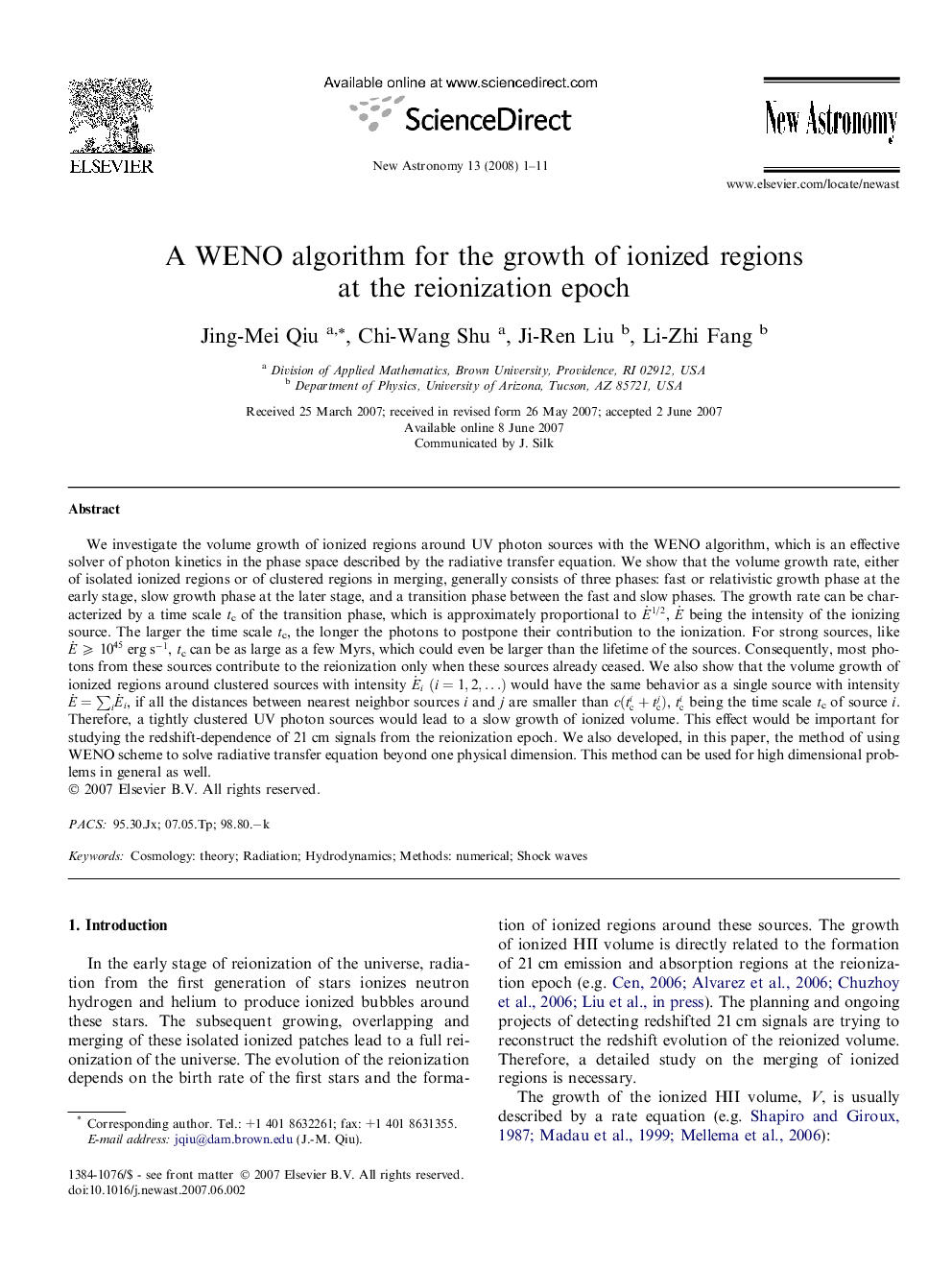| کد مقاله | کد نشریه | سال انتشار | مقاله انگلیسی | نسخه تمام متن |
|---|---|---|---|---|
| 1779698 | 1022020 | 2008 | 11 صفحه PDF | دانلود رایگان |
عنوان انگلیسی مقاله ISI
A WENO algorithm for the growth of ionized regions at the reionization epoch
دانلود مقاله + سفارش ترجمه
دانلود مقاله ISI انگلیسی
رایگان برای ایرانیان
کلمات کلیدی
موضوعات مرتبط
مهندسی و علوم پایه
فیزیک و نجوم
نجوم و فیزیک نجومی
پیش نمایش صفحه اول مقاله

چکیده انگلیسی
We investigate the volume growth of ionized regions around UV photon sources with the WENO algorithm, which is an effective solver of photon kinetics in the phase space described by the radiative transfer equation. We show that the volume growth rate, either of isolated ionized regions or of clustered regions in merging, generally consists of three phases: fast or relativistic growth phase at the early stage, slow growth phase at the later stage, and a transition phase between the fast and slow phases. The growth rate can be characterized by a time scale tc of the transition phase, which is approximately proportional to EË1/2, EË being the intensity of the ionizing source. The larger the time scale tc, the longer the photons to postpone their contribution to the ionization. For strong sources, like EË⩾1045ergs-1, tc can be as large as a few Myrs, which could even be larger than the lifetime of the sources. Consequently, most photons from these sources contribute to the reionization only when these sources already ceased. We also show that the volume growth of ionized regions around clustered sources with intensity EËi(i=1,2,â¦) would have the same behavior as a single source with intensity EË=âiEËi, if all the distances between nearest neighbor sources i and j are smaller than c(tci+tcj), tci being the time scale tc of source i. Therefore, a tightly clustered UV photon sources would lead to a slow growth of ionized volume. This effect would be important for studying the redshift-dependence of 21 cm signals from the reionization epoch. We also developed, in this paper, the method of using WENO scheme to solve radiative transfer equation beyond one physical dimension. This method can be used for high dimensional problems in general as well.
ناشر
Database: Elsevier - ScienceDirect (ساینس دایرکت)
Journal: New Astronomy - Volume 13, Issue 1, January 2008, Pages 1-11
Journal: New Astronomy - Volume 13, Issue 1, January 2008, Pages 1-11
نویسندگان
Jing-Mei Qiu, Chi-Wang Shu, Ji-Ren Liu, Li-Zhi Fang,